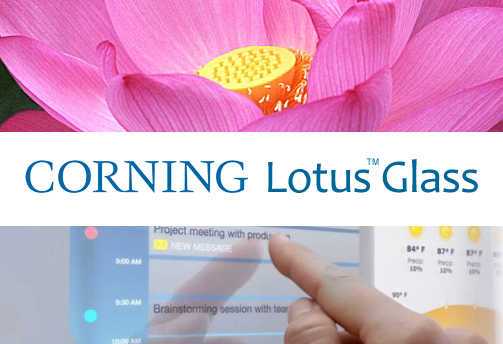Samsung Teams Up With Corning To Manufacture OLED Displays Using Lotus Glass

Corning continues to develop advanced glass technology and their new Lotus Glass is said to deliver the higher processing temperatures and improved dimensional stability needed to produce these new high performance displays. This partnership simply continues the long history Samsung and Corning have of working together to bring the best in display technology.
For more information on this venture, you can check out last week’s press release below:
Corning and Samsung Mobile Display Form New OLED Glass Venture
New business expands Corning’s long-standing collaboration with Samsung
CORNING, N.Y.–(BUSINESS WIRE)–Corning Incorporated (NYSE: GLW) and Samsung Mobile Display Co., Ltd. have signed an agreement to establish a new equity venture for the manufacture of specialty glass substrates for the rapidly expanding organic light emitting diode (OLED) device market. The new business will be located in Korea.
“Samsung Mobile Display has led the global display industry by constantly seeking innovations and challenging current technologies’ limits. We are confident that combining our business powers with Corning’s technology leadership will deliver greater value to our clients”
Combining Corning’s Lotus™ Glass substrate technology and Samsung Mobile Display’s OLED display expertise, this new entity will be well-positioned to provide outstanding product solutions for current and future OLED technologies, from handheld and IT devices to large TVs and beyond.
The newly formed entity will supply OLED backplane glass substrates for Samsung Mobile Display, as well as for the broader Korean market.
According to a recent NPD DisplaySearch report, OLED technology advanced rapidly in 2011, setting a trend that is forecasted to continue through this decade. They estimate that OLED display revenues will exceed $4 billion in 2011 (approximately 4% of flat panel display revenues), and will reach more than $20 billion (approximately 16% of the total display industry) by 2018.
Samsung is playing a leading role in this emerging market through its Galaxy mobile device products and Super OLED TV technology introduced in January at the International Consumer Electronics Show. Corning’s ongoing advanced glass technology development includes a strong focus on high-performance displays. Most recently, this focus has been demonstrated through Corning’s new Lotus™ Glass substrates, which deliver the higher processing temperatures and improved dimensional stability needed to produce the new high performance displays.
“Samsung Mobile Display has led the global display industry by constantly seeking innovations and challenging current technologies’ limits. We are confident that combining our business powers with Corning’s technology leadership will deliver greater value to our clients,” said Soo In Cho, Samsung Mobile Display’s president and chief executive officer.
“Corning and Samsung have a long and successful partnership in the display industry, dating back nearly 40 years to the early days of television,” said Wendell P. Weeks, Corning’s chairman, chief executive officer, and president. “The strength of our business relationship is built on Corning’s ability to develop and make high-technology glass with the key attributes that enable Samsung’s next-generation displays. Together, we have led the evolution of displays – from the high-growth years of CRT, to our current successful business supplying world-leading substrates for today’s high-definition LCD TVs, and now to the launch of this important new venture to advance OLED technology,” Weeks stated.


